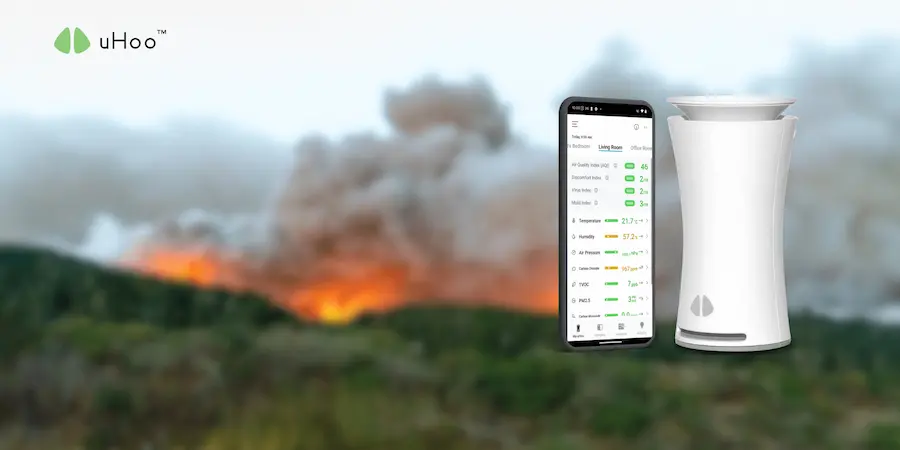When a wildfire smoke alert is issued, it means invisible, harmful particles have traveled to our area, potentially making the air unhealthy to breathe. These tiny particles, known as PM2.5, can penetrate deep into your lungs and even enter your bloodstream, posing risks to your respiratory and cardiovascular health. When there is a wildfire smoke alert, don’t panic, but do take action.
Here’s your essential guide to breathing easier when you get a wildfire smoke alert:
- Stay Indoors as Much as Possible: This is the most crucial step. Limit outdoor activities, especially strenuous ones. If you have children, keep them indoors as their developing lungs are more vulnerable. Elderly individuals, pregnant women, and those with pre-existing heart or lung conditions should be particularly cautious.
- Seal Your Home’s Envelope: When you receive a wildfire smoke alert, immediately close all windows and doors tightly. Check for and seal any obvious gaps around windows, doors, vents, and even pet doors with weatherstripping, towels, or duct tape if necessary. The goal is to create a sealed environment to prevent smoke infiltration.
- Optimize Your HVAC/AC System: If you have a central air conditioning system, set it to “recirculate” or “fresh air intake closed” (if your system has this option) to prevent drawing in outdoor smoke. Ensure your AC filter is clean and consider upgrading to a MERV 13 or higher filter, which can trap more fine particles. For window AC units, ensure the outdoor air intake vent is closed.
- Use High-Efficiency Portable Air Purifiers: Place portable air purifiers with true HEPA filters in the rooms where you spend the most time, such as bedrooms or living areas. These purifiers are highly effective at removing the fine particulate matter (PM2.5) that makes wildfire smoke so dangerous.
- Avoid Indoor Activities That Generate Particles: Don’t add to the problem. Refrain from burning candles, incense, or using fireplaces. Avoid vacuuming unless your vacuum has a HEPA filter, as regular vacuums can stir up settled particles. Limit frying or grilling indoors, as cooking smoke can further degrade air quality.
- Monitor Indoor Air Quality with Your uHoo: Even if your home is sealed, smoke can still seep in. Your uHoo air quality monitor will provide real-time data on indoor PM2.5 levels. If you see these levels rise despite your precautions, it’s a sign that smoke is getting in, and you may need to strengthen your defenses or consider temporarily relocating if levels remain dangerously high.
Responding swiftly to a wildfire smoke alert by implementing these steps can significantly reduce your exposure to harmful pollutants and protect your health during hazy conditions.

